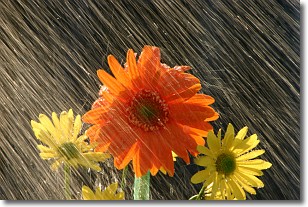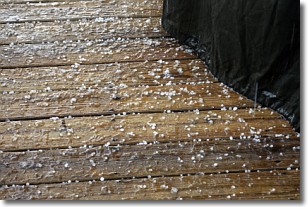Weather Alert in California
Heat Advisory issued May 30 at 12:31PM PDT until May 30 at 8:00PM PDT by NWS San Francisco CA
AREAS AFFECTED: North Bay Interior Mountains; East Bay Interior Valleys; Southern Salinas Valley/Arroyo Seco and Lake San Antonio; Santa Lucia Mountains and Los Padres National Forest; Mountains Of San Benito County And Interior Monterey County Including Pinnacles National Park
DESCRIPTION: * WHAT...Temperatures in the 90s to 105 degrees. * WHERE...Interior Monterey County and the Santa Lucia Range, Most of San Benito County and the Cholame Hills in Southeast Monterey County, North Bay Interior Mountains, East Bay Interior Valleys, and Southern Salinas Valley/Arroyo Seco and Lake San Antonio. * WHEN...For the first Heat Advisory, until 8 PM PDT this evening. For the second Heat Advisory, from 11 AM to 8 PM PDT Saturday. * IMPACTS...This level of heat affects most individuals sensitive to heat, especially those without effective cooling and/or adequate hydration. Impacts possible in some health systems and in heat-sensitive industries. Hot conditions can cause heat illnesses.
INSTRUCTION: Hydration is a critical piece to surviving the heat. Drink water, and if possible, take water to those who are vulnerable. Take extra precautions when outside. Wear lightweight and loose fitting clothing. Try to limit strenuous activities to the early morning or evening. Take action when you experience symptoms of heat exhaustion and/or heat stroke. Beat the heat and check the backseat! Do not leave young children or pets in unattended vehicles.Car interiors will reach lethal temperatures in a matter of minutes. Stay cool, stay hydrated, stay informed.
Want more detail? Get the Complete 7 Day and Night Detailed Forecast!
Current U.S. National Radar--Current
The Current National Weather Radar is shown below with a UTC Time (subtract 5 hours from UTC to get Eastern Time).

National Weather Forecast--Current
The Current National Weather Forecast and National Weather Map are shown below.

National Weather Forecast for Tomorrow
Tomorrow National Weather Forecast and Tomorrow National Weather Map are show below.

North America Water Vapor (Moisture)
This map shows recent moisture content over North America. Bright and colored areas show high moisture (ie, clouds); brown indicates very little moisture present; black indicates no moisture.

Weather Topic: What is Rain?
Home - Education - Precipitation - Rain
 Next Topic: Shelf Clouds
Next Topic: Shelf Clouds
Precipitation in the form of water droplets is called rain.
Rain generally has a tendency to fall with less intensity over a greater period
of time, and when rainfall is more severe it is usually less sustained.
Rain is the most common form of precipitation and happens with greater frequency
depending on the season and regional influences. Cities have been shown to have
an observable effect on rainfall, due to an effect called the urban heat island.
Compared to upwind, monthly rainfall between twenty and forty miles downwind of
cities is 30% greater.
Next Topic: Shelf Clouds
Weather Topic: What is Sleet?
Home - Education - Precipitation - Sleet
 Next Topic: Snow
Next Topic: Snow
Sleet is a form of precipitation in which small ice pellets are the primary
components. These ice pellets are smaller and more translucent than hailstones,
and harder than graupel. Sleet is caused by specific atmospheric conditions and
therefore typically doesn't last for extended periods of time.
The condition which leads to sleet formation requires a warmer body of air to be
wedged in between two sub-freezing bodies of air. When snow falls through a warmer
layer of air it melts, and as it falls through the next sub-freezing body of air
it freezes again, forming ice pellets known as sleet. In some cases, water
droplets don't have time to freeze before reaching the surface and the result is
freezing rain.
Next Topic: Snow
Current conditions powered by WeatherAPI.com




